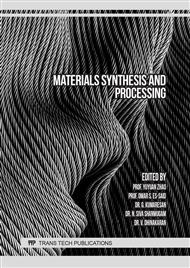p.33
p.39
p.49
p.59
p.65
p.71
p.79
p.87
p.95
Investigation of Fracture Mechanisms of Self-Reinforced Polypropylene/Polycarbonate Composites Subjected to Fatigue Loading
Abstract:
Self-reinforced polymeric composites have numerous advantages over traditional polymers, including increased mechanical strength, fracture toughness, and other mechanical properties. A special type of such composites can be obtained using non-conventional molding techniques. The investigated self-reinforced composites have layered structure, where layers are created by the same material in numerous molding cycles in the manufacturing process, and have gradient mechanical properties. According to this, it is of high interest to investigate structural behavior of these materials under fatigue loading, including temperature effects and fracture mechanisms occurring during fatigue. The results of the performed studies proved complex fracture mechanisms of self-reinforced polymeric composites manufactured using the applied unconventional injection molding technique due to variability of mechanical properties over the thickness.
Info:
Periodical:
Pages:
65-70
Citation:
Online since:
November 2022
Authors:
Price:
Сopyright:
© 2022 Trans Tech Publications Ltd. All Rights Reserved
Share:
Citation:



